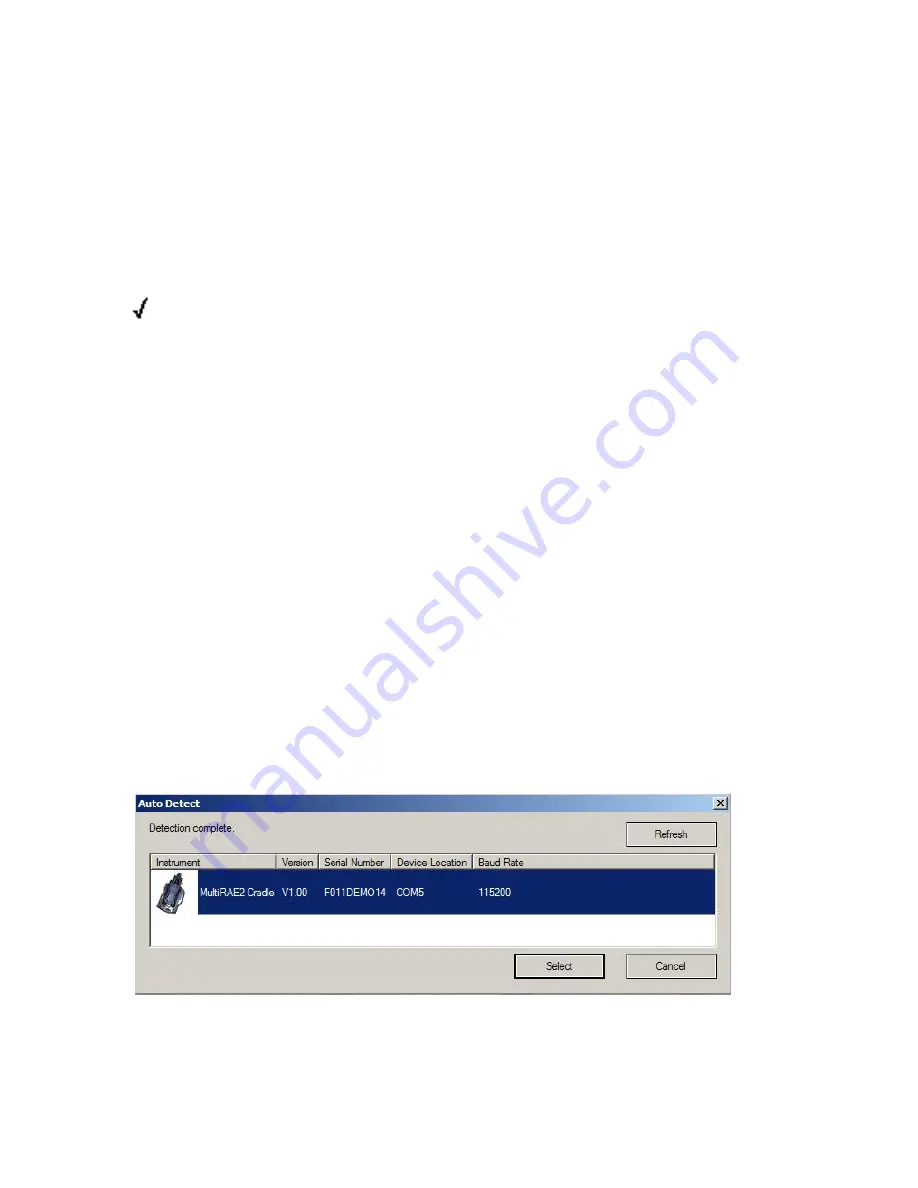
83
10 Policy Enforcement
The MultiRAE can be configured to enforce a facility/company’s requirements that calibration and/or
bump testing be performed at specified intervals, and to explicitly prompt the user that calibration/bump
testing is required. Depending on how Policy Enforcement features are configured, the user may be
required to perform a bump test or calibration prior to being able to use the instrument. That is, it can be
set to not allow normal operation of the instrument unless calibration or bump testing is performed.
If the instrument has been bump tested and calibrated in compliance with the policy settings, a check-
mark icon is included along the top of the MultiRAE screen:
If Policy Enforcement is enabled, then after startup the MultiRAE displays a screen that informs the user
that the instrument requires either a bump test or a calibration. If both are required, then they are shown in
sequence.
Note:
Policy enforcement features are disabled by default.
10.1 Setting Policy Enforcement
You must use ProRAE Studio II to make changes to Policy Enforcement settings. The procedure differs,
depending on whether you are using an AutoRAE 2, a MultiRAE Travel Charger, or a MultiRAE
Desktop Cradle. Policy violations are captured in the datalog.
10.1.1 Using The AutoRAE 2 Automatic Test And Calibration System
To program a MultiRAE via an AutoRAE 2, you need ProRAE Studio II Instrument Configuration and
Data Management Software, the AutoRAE 2 connected to a power source, and a USB PC
communications cable.
1.
Connect a USB cable between a PC with ProRAE Studio II and the AutoRAE 2.
2.
Apply power to the AutoRAE 2.
3.
Turn off the MultiRAE (or put the MultiRAE into AutoRAE 2 Mode) and set it in the cradle.
4.
Start ProRAE Studio II software on the PC.
5.
Select “Administrator” and input the password (the default is “rae”).
6.
Click “Detect the instruments automatically” (the magnifying glass icon with the letter “A” in it).
After a few seconds, the AutoRAE 2 Cradle is found and it is shown, along with its serial number:
7.
Click on the icon to highlight it, and then click “Select.”






























